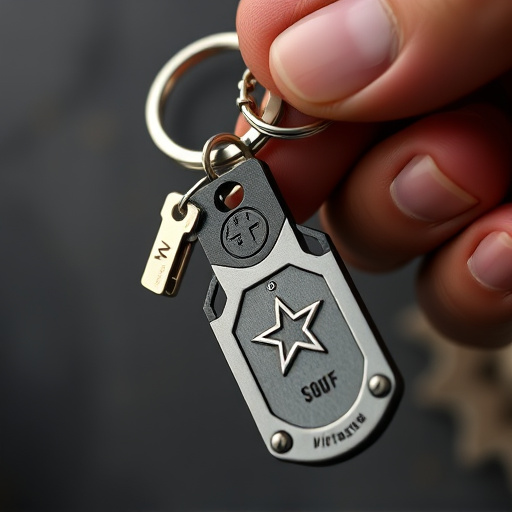Keychain safety devices provide personal security with compact, effective striking points designed for quick deployment against attackers. Understanding sensitive zones like eyes, throat, and groin enhances self-defense readiness. The device's swift release mechanism allows users to react quickly with precise strikes, offering direct and effective self-defense in emergencies.
“Unleash the power of self-defense with the innovative keychain safety device—a compact yet potent tool. This article delves into the mechanics behind these devices, focusing on understanding how they work and their effectiveness as self-defense tools. We explore the concept of a ‘keychain weapon’ and its strategic striking zones for maximum impact. Furthermore, we dissect the quick release mechanism, highlighting its design advantages and benefits in critical situations. Get ready to discover why this tiny device could be your best ally when facing unexpected threats.”
- Understanding Keychain Safety Device Mechanics
- Keychain Weapon: Effective Striking Zones
- Quick Release Mechanism: Design and Benefits
Understanding Keychain Safety Device Mechanics
Keychain safety devices, often marketed as self-defense tools, operate on a simple yet effective principle. These compact gadgets are designed to provide users with an extra layer of security and peace of mind when facing potential threats. Understanding the mechanics behind their quick release mechanisms is crucial in maximizing their potential as defensive tools.
The best keychain weapon striking points are strategically positioned to allow for swift and precise attacks. When activated, these devices swiftly deploy a sharp edge or point, designed to disrupt an attacker’s grip on their victim. By quickly releasing the device from its hidden compartment, users can gain valuable time to escape or deter an assault, making it an invaluable asset in unexpected situations.
Keychain Weapon: Effective Striking Zones
When considering a keychain safety device with a quick release mechanism, understanding the best striking zones on your body for self-defense is key. The most effective areas to target are typically the eyes, throat, and groin—sensitive points that can quickly incapacitate an assailant. For instance, a well-placed strike to the eye or throat can render them momentarily unconscious, giving you precious time to escape.
The groin zone, often overlooked but powerful, is another critical area. A swift kick or knee strike here can cause significant pain and disrupt an attacker’s balance, allowing for a strategic retreat. Mastering these striking points and incorporating them into your training ensures that you’re prepared should the need arise, enhancing the overall effectiveness of your keychain safety device.
Quick Release Mechanism: Design and Benefits
The quick release mechanism in a keychain safety device is a clever innovation designed to provide swift and easy access during emergencies. This feature allows users to swiftly deploy their self-defense tool, ensuring that critical moments are met with lightning-fast reactions. The mechanism typically involves a simple lever or button that, when activated, releases the keychain’s locking mechanism, enabling the user to quickly extract the device from their pocket or bag.
One of the key benefits of this design is its ability to highlight the best keychain weapon striking points. By eliminating the need for complex unlocking procedures, users can focus on delivering precise and effective strikes. This direct access feature makes the keychain safety device a versatile and convenient option for personal security, especially in situations where every second counts.
The quick release mechanism in keychain safety devices is a game-changer, providing users with swift access during emergencies. By understanding the mechanics and optimizing striking zones, such as the best keychain weapon striking points, individuals can effectively utilize these tools. This innovative design ensures that help is just a click away, making it a valuable asset for personal safety.
